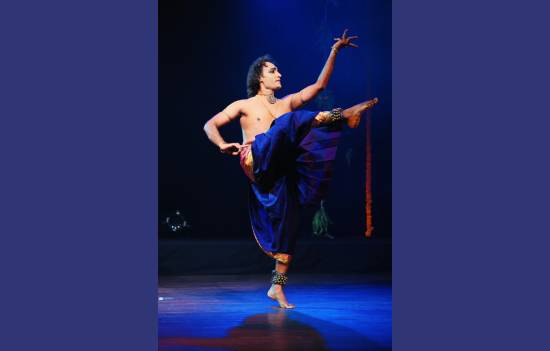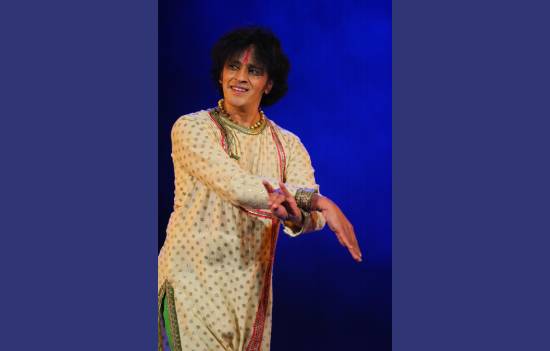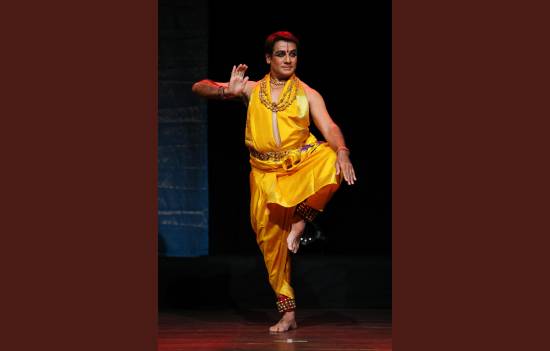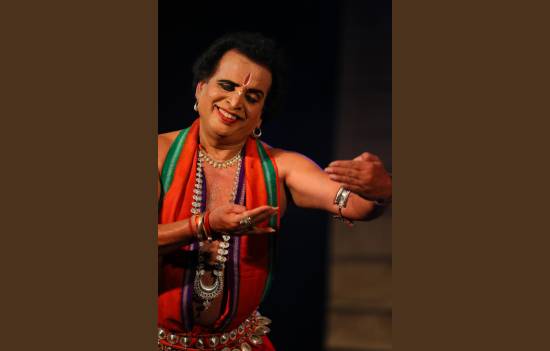- Who is a Nartaka and what is role played?
Author shares thoughts that came about while
witnessing four nartakas who performed at the ‘Kritajnata Festival’, which was organised by Chandraguru School of dance in Bengaluru.
In the ancient times Bharata Muni placed the nartaki
in the role of a dancer within the drama. To add beauty, grace and vivacity,
the Apsaras were created by Brahma who added the delicate style called Kaishiki
Vritti. Singing and dancing must be given to women says
Bharata, reasoning that their voice tends to be naturally sweeter and their
gestures and movements naturally graceful. He adds that the grace in movements
and sweetness of voice in a man, should be considered as an exception.
Nartaka refers to an actor who can be assigned the
role of an assesor of dramatic plays according to the Natyashastra. It was only in the
medieval times that the mention of male dancers as Nartaka is seen.
Perani has been variously described as a group dance or a solo, and only by
males. The Perani involves five sections starting with a jester (Jagan),
a Kaivara composition eulogising the king, a rhythmic Jugalbandhi, Jati
or dance sequence and ending with a Gita or song. Although it is well known to be the style which uses an inverted pot on which the dance is done over the
years, the texts have given the distinctness of the style based on the
specialized foot movements using a wide scale of rhythmic beats.
The Peranin dancer has his body smeared over with white powder
such as ash, the head shaved except for a small tuft of hair wearing the anklet
bells or ghargharikas on the shanks, having a resonant voice, clever in
the five elements (listed below), adept in keeping with the Tala and Laya
and dancing to attract the audience. Sharangadeva in his celebrated text
Sangeetaratnakara, names the five elements as Gharghara, Vishama, Bhavashraya,
Kavicharaka and Gita.
Gharghara is
characterised by special training in the sound created by the bells and can
have up to six variations. These include the kuttana movement on the
ground of both heels being struck up and down one after the other or of just
one heel with the fore part of the feet held to the ground. It may be striking
the ground with the foot with the sole in an up and down movement or sliding
the foot with the sole held to the ground forward and backward one after the
other. Other movements are shaking the feet while lifting it gently in the air
or shanks being shaken right and left
sides alternately.
Peranin dancer uses
his entire body movements to incite humor. He is free to use such karanas
as employed by men in disguise, especially the jumps of a jester. The knowledge
of Baavashraya and kavicharaka elements is for superior characters
or uttamanayakas where the movement is more dignified.
All these and many more thoughts came about while witnessing four nartakas who performed at the ‘Kritajnata Festival’, which was organised by Chandraguru School of dance in Bengaluru.
Gururaju, who organized this, started with Vande- Vande
as a salutation to the goddess Sarasvati, the presiding deity of the Kuchipudi
village and the seat of knowledge of Shodashakala or the sixteen art
forms. Guru Vedantam Parvateesam heaps praises on Kuchipudi Vani and the
richness of art. The dancer paid salutations to the personification of grace,
benevolence, mellifluous vocals, the four expressive modes or chatur-vidha
abhinaya and the nine aesthetic sentiments or navarasas.
Gururaju made a good start to
connect with the audiences. There were male and female voices rendering in
portions of the song that was recorded and played which at times, did not blend
well due to differing scales. Ramadasa Kriti followed with a plea to Lord Rama to
communicate to the devotee. Gururaju concluded
with the popular Neela megha Shareera that is from the well-known “Krishnaleela Tarangini” text.
His skill
while dancing on the rim of the brass plate was noteworthy. This dance
represents the symbolism of life, with its various challenges that cause limitations.
It is only with the mastery over key principles, higher knowledge and supreme
balancing capabilities that one can succeed over them and rise towards the
goals.
 Gururaju.
Gururaju.
It was then the turn of T D
Rajendra, an acclaimed Kathak exponent who chose to render the venerated Uga
Bhogas from Dasa Sahitya, which covers the fervour of the Karnataka Haridasas
during the Bhakti movement. The evening’s presentation focused upon the devotional literature of Purandara Dasaru. The verses had been culled out, including the removal of the six vices or Arishadvarga. His Jayadeva Ashtapadi,
Priye Charusheeley where Krishna implores Radha- “place your lotus feet on my head, but please talk to me”, was highly appreciated by the gathering. The last song was a Tusidas Bhajan enacting the pangs of Bharata when he gets to know that his brother Rama has been banished for exile.
 Rajendra.
Rajendra.
Dr.Satyanarayana Raju, a popular
Nartaka weaves narratives within the story with ease and panache. He presented
the Padavarnam from the Tanjore Quarter collection- Samininney
korinaanura, which is an Ashta Ragamalika, with eight Ragas.
 Dr Raju
Dr Raju
Odissi by Gajendra Panda was the final recital which one felt could have been given an earlier slot, considering that he isn’t from Bengaluru. He picturised before our eyes, Lord Jagannatha's benevolence in rescuing the needy with the often retold episodes of Gajendra
Moksha and Draupadi Vastrapaharana. These legends continue to
enchant viewers tirelessly as aesthetic bliss is ultimately ONE that immerses
in the joy, rising above sad tales. Ramayana was taken up to portray the nine Rasas
in the next composition by the artiste.
 Gajendra Panda.
Gajendra Panda.
It is
important for all dancers, whether Nartaki or Nartaka to be constantly practising and maintaining a disciplined lifestyle to be able to give one’s innate force and involvement during performance. The texts emphasize exercises practised regularly, on the floor ones like stretches and above in the air like leaps.
Proper
nutrition, oil massage, ingredients of gruel to be taken are prescribed so that
the impact is improved in pure dance movements. The stylized ones mentioned are
the Caris that make up the units of movements with the legs. Besides this, the expressions require consistent listening to the lyrics, getting familiar with the composer’s background and drawing inspiration from tuning in to the melody, repeatedly.
Bharata the sage gives the characteristics of a song
par excellence as one which has full notes with instruments, harmonious, gives
joy, delicate and performed with effortless sweetness of notes. He even says that the vocalist
should have a throat with a sweet voice, good knowledge of Tala, Laya, Kala.
Both male and female singers are described with their characteristics. The
lady should possess brilliance, courage, a sweet and regulated voice.
Bharata distinguishes regarding the voice of men and
women, saying that
while the former is stronger and suitable for recitatives [like Nattuvangam], the latter can accompany
dance. The interchanging here may not be that easy, if attempted according to
him. Men are also told to instruct women in recitatives Patyam, singing Ganam
and instruments Vadyam.
It would be ‘euphoria’ if one can see music in the dance
and hear dance in the music!
An acclaimed dancer
researcher and author, Dr. Padmaja Venkatesh Suresh is well-known for her
immaculate insight into esoteric sciences, corelated with years of training and
experience. Having toured extensively with her lectures, workshops and thematic
performances, she leads Aatmalaya Academy, Bengaluru that propagates the cause
of Sanatana Dharma and Vedic values through the arts. A PhD in dance and
philosophy, she has several awards to her credit.
To read all
articles by author
To read all
articles on Indian Dance Forms